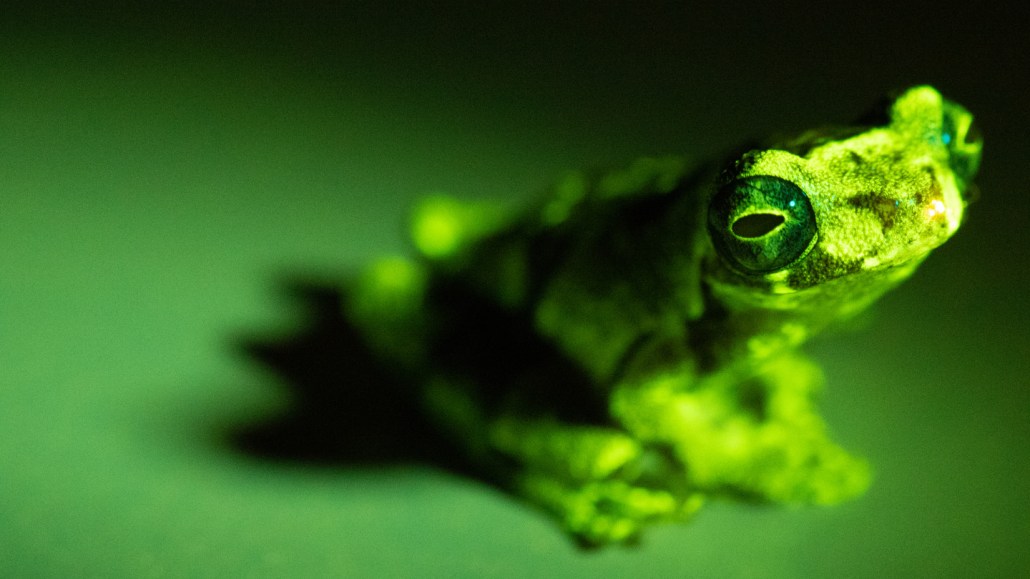
The Sarayacu treefrog (Dendropsophus parviceps) is one of 151 frog species recently determined to fluoresce under the blue hues of twilight.
Santiago Ron

The Sarayacu treefrog (Dendropsophus parviceps) is one of 151 frog species recently determined to fluoresce under the blue hues of twilight.
Santiago Ron